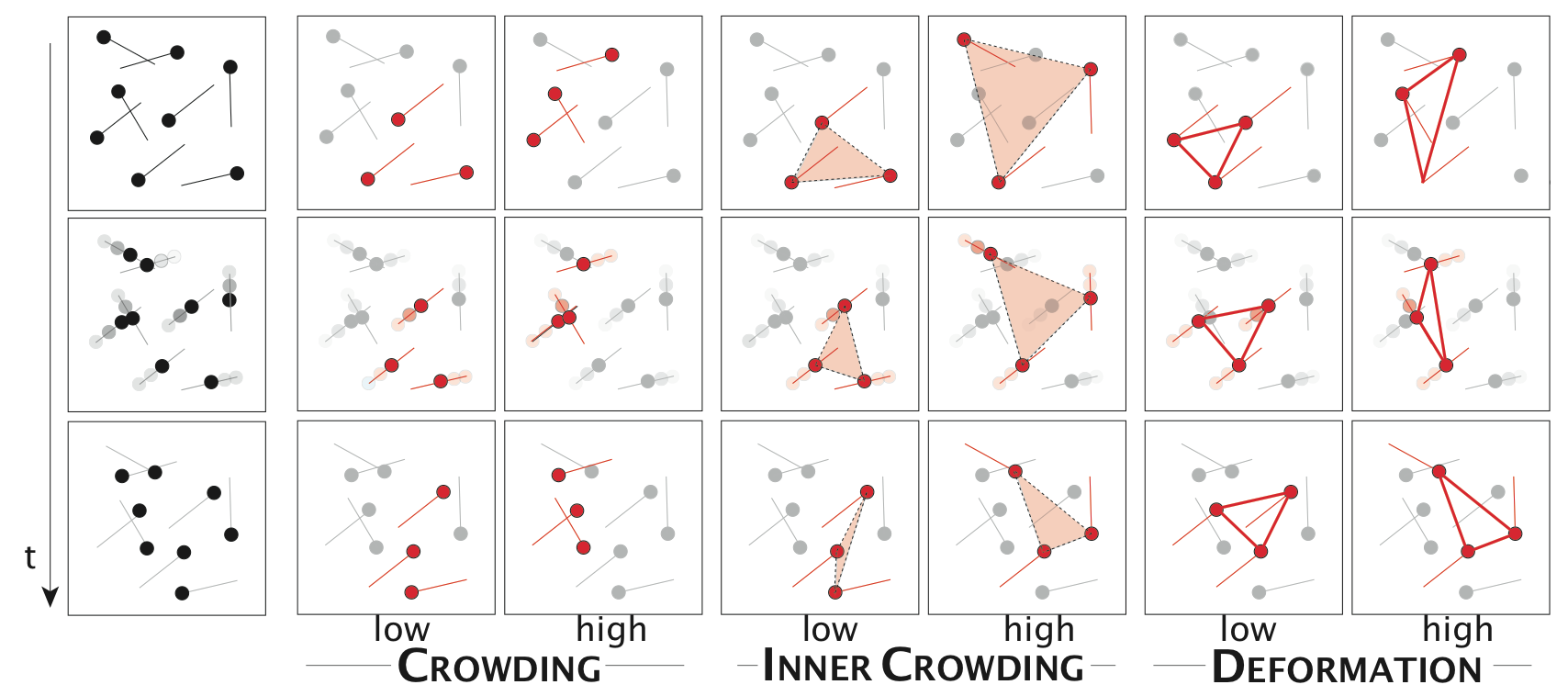Section: New Results
Effectiveness of Staggered Animations
Participants : Fanny Chevalier, Pierre Dragicevic [correspondant] , Steven Franconeri.
Interactive visual applications often rely on animation to transition from one display state to another. There are multiple animation techniques to choose from, and it is not always clear which should produce the best visual correspondences between display elements. One major factor is whether the animation relies on staggering—an incremental delay in start times across the moving elements. It has been suggested that staggering may reduce occlusion, while also reducing display complexity and producing less overwhelming animations, though no empirical evidence has demonstrated these advantages. Work in perceptual psychology does show that reducing occlusion, and reducing inter-object proximity (crowding) more generally, improves performance in multiple object tracking.
We empirically investigated the effectiveness of staggering [15] . We ran simulations confirming that staggering can in some cases reduce crowding in animated transitions involving dot clouds (as found in, e.g., animated 2D scatterplots). We empirically evaluated the effect of two staggering techniques on tracking tasks, focusing on cases that should most favour staggering. We found that introducing staggering has a negligible, or even negative, impact on multiple object tracking performance. The potential benefits of staggering may be outweighed by strong costs: a loss of common-motion grouping information about which objects travel in similar paths, and less predictability about when any specific object would begin to move. Staggering may be beneficial in some conditions, but they have yet to be demonstrated. Our results are a significant step toward a better understanding of animation pacing, and provide direction for further research.
More on the project Web page: fannychevalier.net/animations



